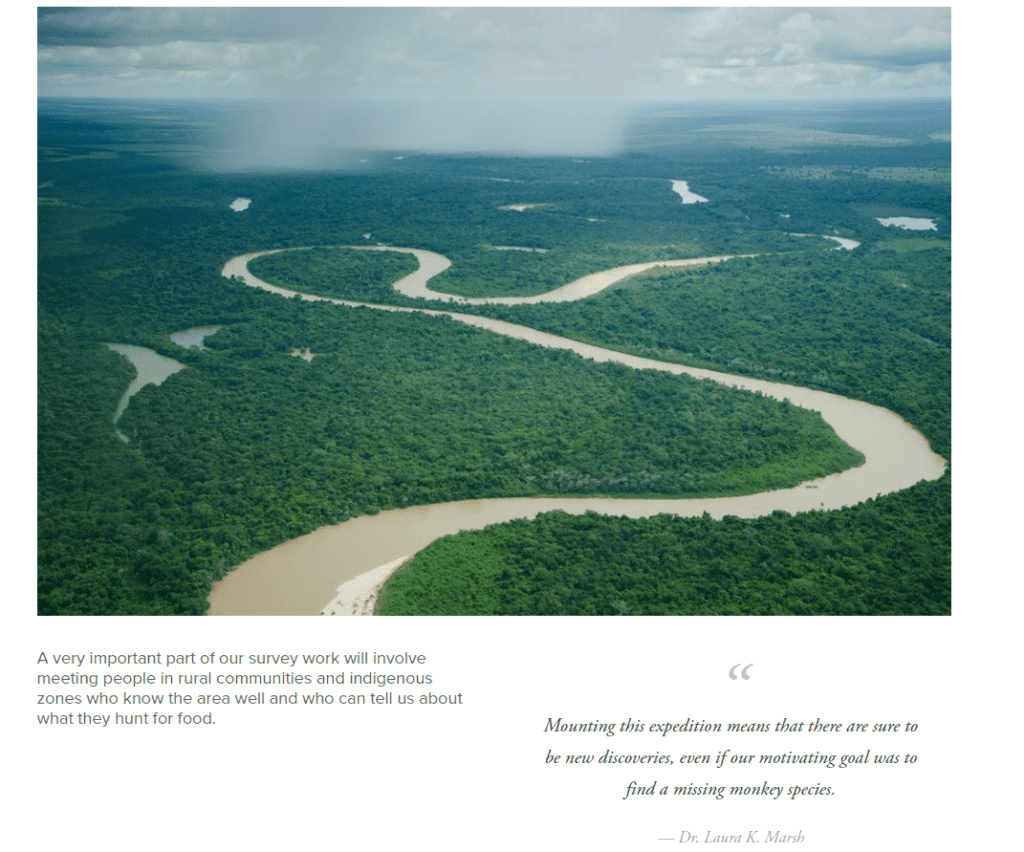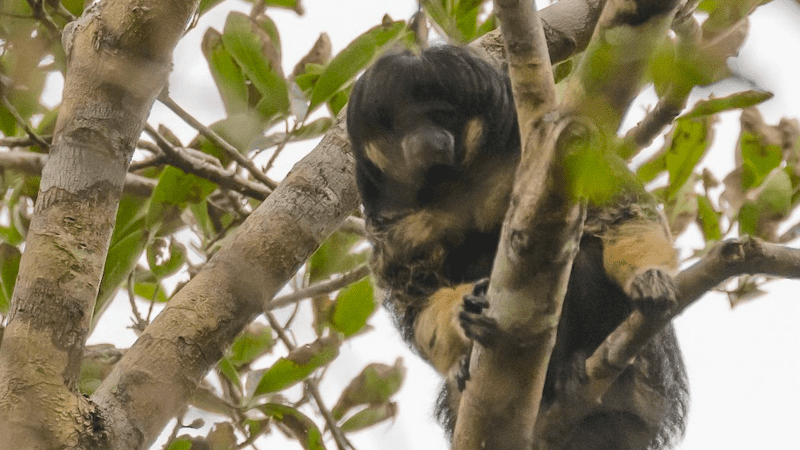“I was trembling and so excited I could barely take a picture,” said Christina Selby, who snapped the photos.
It’s been over eight decades since anyone spotted a Vanzolini’s bald-faced saki. The extremely elusive monkey was first spotted in 1936 when Ecuadorian naturalist Alfonso Ollala explored the Amazon, and was thoroughly described by renowned mammalogist Philip Hershkovitz, but has remained enigmatic to this day.
Laura Marsh, the director of the Global Conservation Institute and one of the world’s leading experts on saki monkeys, managed to find five related species — also called flying monkeys — but this particular one remained hidden.
“The target species, Pithecia vanzolinii, are distinctive monkeys like no other primate that might live nearby. They are especially notable for their buffy-colored arms and legs. They were named for Pablo Vanzolini, a famous Brazilian biologist, and musician,” the expedition’s website reads.

To find it, Marsh rallied a team of scientists, photographers, conservationists, and local guides. They prepared a four-month expedition in a little-explored part of the Amazon. It was not without peril, as they set out in a two-story houseboat and headed up the Eiru River, near the Brazil-Peru border, but after all, it was all worth it. After just three days, they spotted the first specimen, carelessly flinging itself from branch to branch. This was just the taster.
For the next three months, they mapped the species’ presence in several areas along the Eiru. Armed with this new found knowledge, they hope to convince authorities to take measures to protect the monkey.
“Given what we’ve seen, if no further controls on hunting and forest clearing are put into place outside of what limited reserves currently exist, the saki’s conservation status may become critical,” explained Marsh to Mongabay. “Most of the large monkeys, which are a preferred food source [for local communities], have been hunted out of the forests along the Eiru and Liberdade Rivers.”
The status of the species is yet to be established. Marsh says she will likely recommend “threatened,” but that particular part of the Amazon is drastically changing, mostly due to hunting. People are hunting and fishing at every corner, she says, and this is taking a massive toll. Birds (especially large birds) are rarer and rare, and the status of the saki may be more precarious than anticipated.
Just as we found this species, we may lose it again — this time, to a fault of our own.
“Initially we set out to find this lost species,” she says, but that became a smaller piece of the picture they saw during the expedition.
The findings will be published in the journal Oryx later this month.




